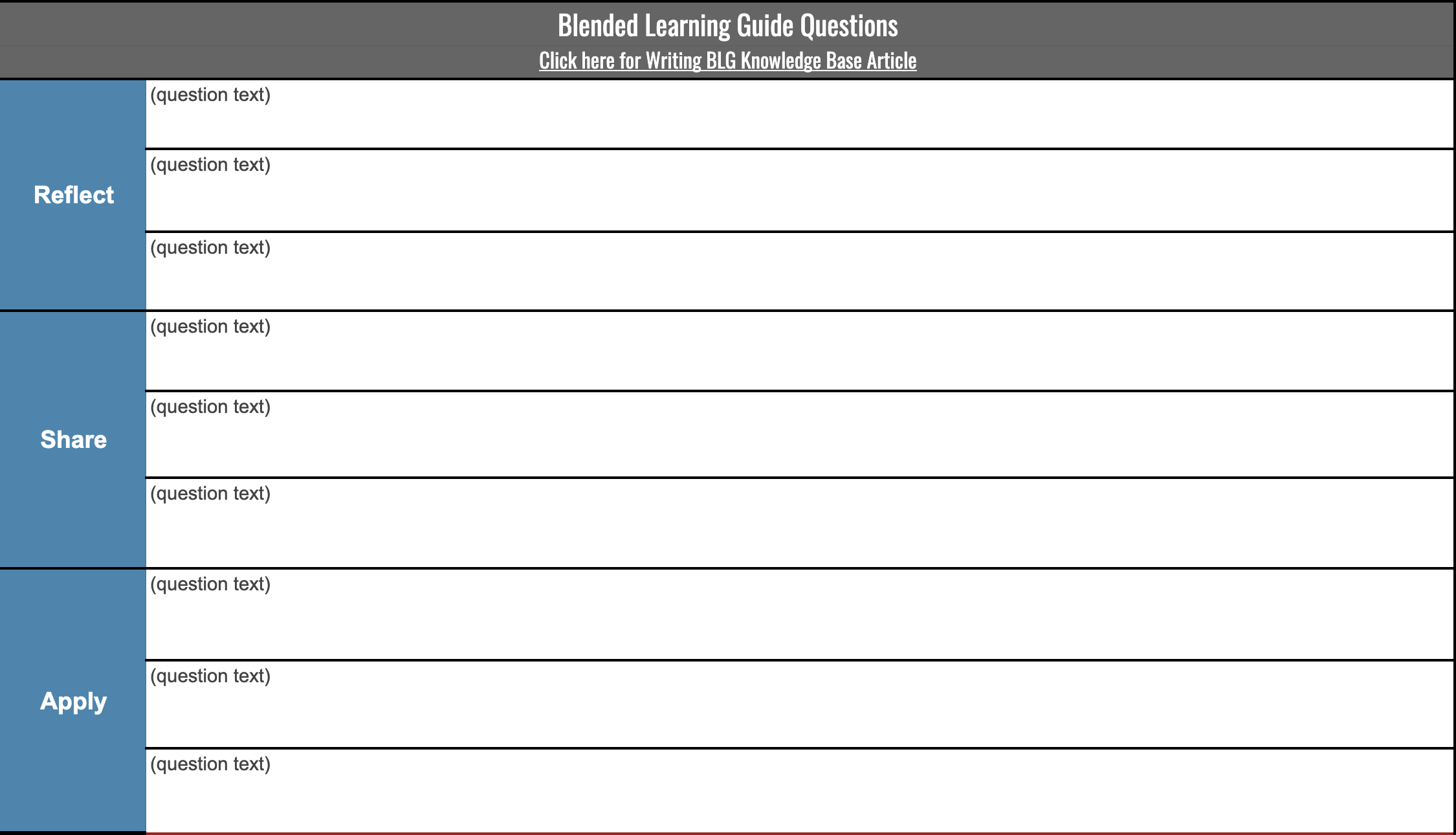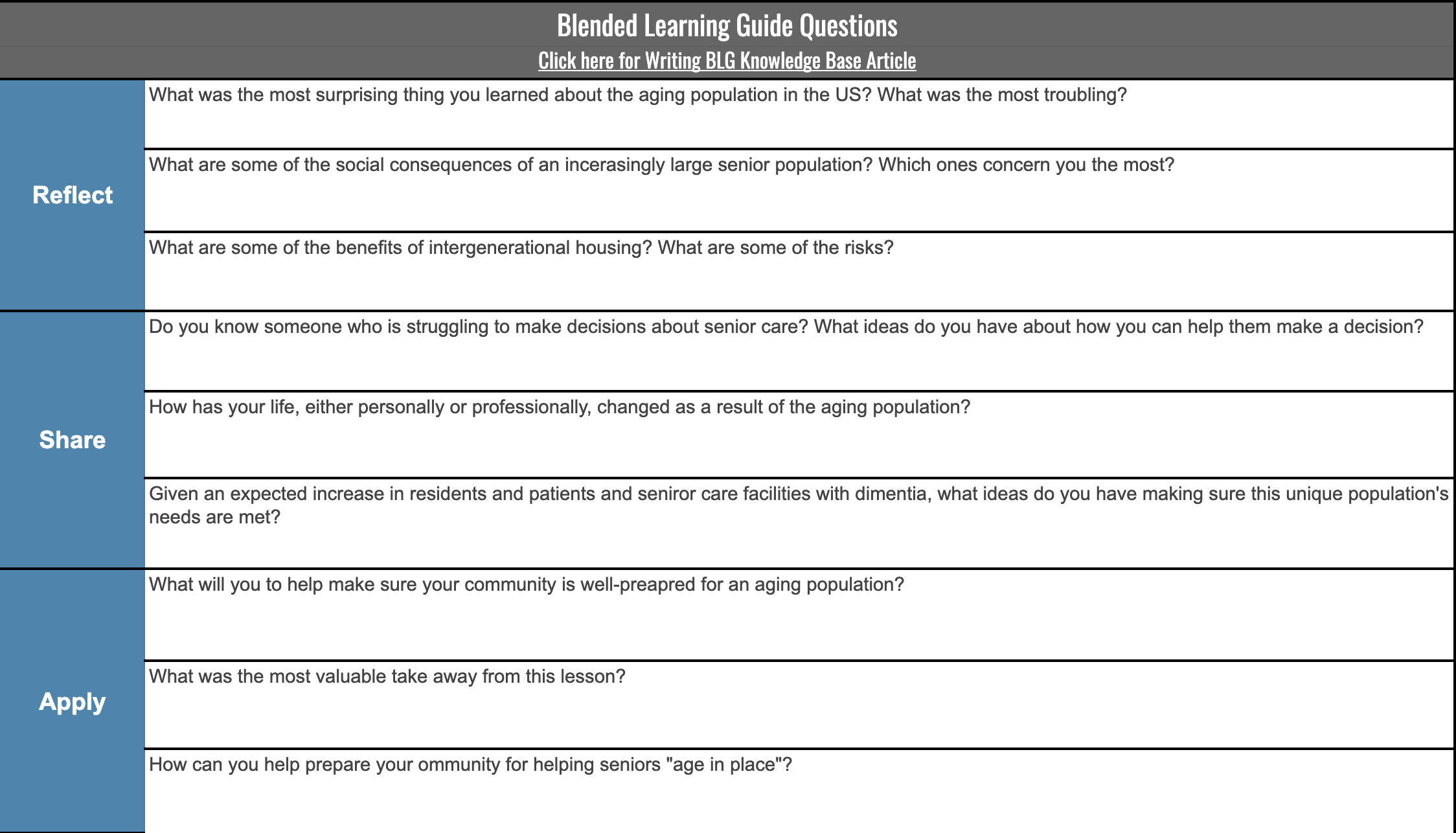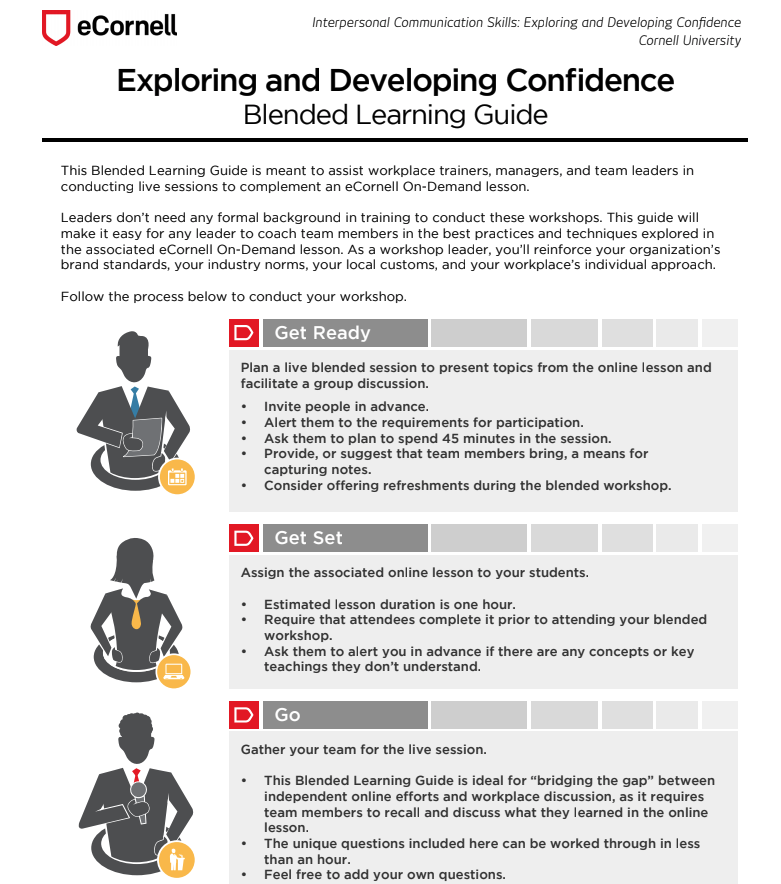Departmental Standards
Company-Wide
eCornell Styleguide & Branding
Cornell University Branding
Writing and Editing Style Guide
Faculty and Expert Naming Conventions in Courses
Cornell School and Unit Names
Tips for Campus Engagements
LSG
Legal Policies
CSG
Updating Wrike Due Dates
Photography Style Guide
eCornell Mini Visual Style Guide
The Pocket Guide to Multimedia Design Thinking (*as It Pertains to Your Job Here)
Creative Services (CSG) Handbook
Administrative
LSG Meeting Recordings and Notes
Sending Faculty Sign-Off Forms in Adobe Sign
Weekly Faculty Status Emails
Animation/Motion Design
Instructional Design
Required Course Elements
The Pocket Guide to Instructional Design Thinking at eCornell
Adding AER to Canvas
Grading
D&D Newsletter
LSG Newsletter (LSGN) - February 2024
LSG Newsletter (LSGN) - March 2022 Edition
LSG Newsletter (LSGN) - December 2023
LSG Newsletter (LSGN) - October 2021 Edition
LSG Newsletter (LSGN) - June 2022 Edition
D&D Newsletter November 2024
LSG Newsletter (LSGN) - August 2022 Edition
LSG Newsletter (LSGN) - June 2023
LSGN Newsletter April 2023
LSG Newsletter (LSGN) - February 2022 Edition
LSG Newsletter (LSGN) - October 2022 Edition
LSGN Newsletter February 2023
LSGN Newsletter March 2023
D&D Newsletter September 2024
LSG Newsletter (LSGN) - August 2023
LSG Newsletter (LSGN) - March 2024
LSG Newsletter (LSGN) - April 2022 Edition
D&D Newsletter - August 2024
LSGN Newsletter January 2023
LSG Newsletter (LSGN) - October 2023 article
LSGN Newsletter (LSGN) - April 2024
LSG Newsletter (LSGN) - November 2021 Edition
D&D Newsletter February 2025
LSG Newsletter (LSGN) - January 2022 Edition
LSGN Newsletter December 2022
D&D Newsletter April 2025
LSG Newsletter (LSGN) - July 2022 Edition
LSG Newsletter (LSGN) - September 2022 Edition
Course Development
Image Uploads for Inline Projects
How to Install the Firefox Canvas Utilities Extension
Revising a Course/ Creating a Redux Version/ Course Updates
Creating a Perma Link With Perma.cc
Course Content Deletion Utility — Removing All Course Content
Teleprompter Slide Template
Course Names
Requesting High Resolution Video Uploads
Technical Talking Points Template
Writing Discussions: Guidelines for IDs
Online Resources in Credit-Bearing Courses
Hiring Actors for an eCornell Project
Marketing
Operations
Tech
Master Course Template Differences (8675309s)
Non-CSG File Uploads
Mentored Learning Conversion Process and Resources
Doc-Based Master Course Template and Standards (8675309-DOC)
Pedagogical Guidelines for Implementing AI-Based Interactives: AER
Coding Master Course Template and Standards (8675309-CODE)
Practice Quiz Standards
Hero Image
Platform Training
Administrative Systems
ADP
Google Drive
Downloadables Process
Embed a Document from Google Drive
Adding Google Links to Canvas
File Naming and Storage Convention Standards
Google Drive for Desktop Instructions
Storing Documents in Multiple Locations
Wrike
Wrike System Fundamentals
Field Population
1.0 to 2.0 Wrike Project Conversion
Blocking Time Off in Work Schedule (Wrike)
Wrike Custom Field Glossary
Wrike "Custom Item Type" Definitions
How to Create a Private Dashboard in Wrike
Using Timesheets in Wrike
Importing Tasks into a Wrike Project
Wrike Project Delay Causes Definitions
Setting OOO Coverage for Roles in Wrike
How to Change a Project's Item Type in Wrike
Using Search in Wrike
How to Create a Custom Report in Wrike
@ Mentioning Roles in Wrike
Automate Rules
Using Filters in Wrike
Managing Exec Ed Programs in Wrike
External Collaborators
Wrike for External Collaborators: Getting Started
Wrike for External Collaborators: Views
Wrike for External Collaborators: Tasks in Detail
Wrike Updates
New Experience Update in Wrike
Wrike Course Development Template 2.0 - What's New
Wrike - Course Development Template 3.0 Release Notes
Wrike Process Training
Course Development & Delivery Platforms
Canvas
Development
Adding Custom Links to Course Navigation
Adding Comments to PDFs from Canvas Page Links
Setting Module Prerequisites and Requirements in Canvas
Canvas Page Functionality
Create a New Course Shell From 8675309
Using LaTeX in Canvas
Search in Canvas Using API Utilities - Tutorial
Reverting a Page to a Previous Version
Student Groups
Create Different Canvas Pages
Importing Specific Parts of a Canvas Course
Canvas HTML Allowlist/Whitelist
Understanding Canvas Customizations/Stylesheets
Operations
Discussion Page Standards
How to import a CU course containing NEW quizzes
Canvas LMS: NEW Quiz compatibility
Faculty Journal
Course Content Style Guide
Click-To-Reveal Accordions in Canvas
Course Maintenance Issue Resolution Process
Meet the Experts
Codio
Codio Operations
Managing Manually Graded “Reflect and Submit” Codio Exercises
Codio Structure and Grading for Facilitators
Premade Codio Docs for Ops & Facilitators
Codio Remote Feedback Tools for Facilitators
Developers
Development Processes
Creating a New Codio Course
Creating a New Codio Unit
Integrating a Codio Course into Canvas
Embedding a Codio Unit into Canvas
Setting Up the Class Fork
Jasmine Autograde Unit Testing
Setting Up the Class Fork (LTI 1.3)
R Studio - Exclusion List for R Code
Mocha/Selenium Autograding
Starter Packs in Codio
Configuring Partial Point Autograders in Codio
Launch a Jupyter Notebook from VM
AI Extensions
Program-Specific Developer Notes
Codio Functionality
Jupyter Notebooks
Jupyter Notebooks - nbgrader tweaks
Jupyter Notebooks Style Guide
Adding Extensions to Jupyter Notebooks
Setting up R with Jupyter Notebooks
Change Jupyter Notebook Auto Save Interval
How to Change CSS in Jupyter Notebook
RStudio in Codio
How To Centralize the .codio-menu File to One Location
Codio Fundamentals for LSG
Using the JupyterLab Starter Pack
Using Code Formatters
Using the RStudio Starter Pack
Conda Environments in Codio
Updating Codio Change Log
Codio Basics: Student Support
eC Facilitator Guide to Codio
Migrating to Updated Codio Courses
Qualtrics
Ally
Ally Institutional Report Training
Ally Features Overview Training
Using the Ally Report in a Course
Ally Vendor Documentation/Training Links
Adobe
Other Integrations
Pendo Overview
How to Add VitalSource eBooks in Canvas
Enabling Zoom/"Live Sessions" in a Course
Pendo Guide Creation
H5P
Modifying Subtitles in H5P Interactive Videos
Embedding H5P Content Into Canvas
Troubleshooting H5P Elements in Canvas
Inserting Kaltura Videos into H5P Interactive Videos
Adding Subtitles to H5P Interactive Videos
S3
BugHerd
Instructional Technologies & Tools Inventory
Canvas API Utilities
Getting started with the MOP Bot
eCornell Platform Architecture
HR & Training Systems
Product Development Processes
Accessibility
What Is Accessibility?
What Is Accessibility?
Accessibility Resources
Accessibility Considerations
Accessibility Support and Assistive Technology
Structural Accessibility
Accessibility Design and Development Best Practices
Accessible Images Using Alt Text and Long Descriptions
Accessible Excel Files
Accessibility and Semantic Headings
Accessible Hyperlinks
Accessible Tables
Creating Accessible Microsoft Files
Mathpix: Accessible STEM
Design and Development General Approach to Accessibility
Integrating Content Authored by a Third Party
Planning for Accessible Tools
Accessibility Considerations for Third Party Tools
Studio Accessibility
Designing for Accessible Canvas Courses
Accessibility: Ongoing Innovations
Course Development
Planning
Development
0. Design
1. Codio Units
1. Non-Video Assets
3. Glossary
4. Canvas Text
4. Tools
4. Tools - Wrike Task Definitions
3. Review And Revise Styled Assets
ID/A to Creative Team Handoff Steps
General Overview of Downloadables Process
Course Project: Draft and Final
Excel Tools: Draft and Final
eCornell LSG HTML Basics
1. Non-Video Assets - Wrike Task Definitions
2. Video
Multifeed Video
2. Video (Standard) - Wrike Task Definitions
Studio Tips
Tips for Remote Video Recording Sessions
Who to Tag for Video Tasks
3. Animation
3. Animation - Wrike Task Definitions
2. Artboard Collab Doc Prep
6b. Motion Design Review and Revise
Who to Tag for Animations Tasks
3. Artboard Collab Process Walkthrough
DRAFT - FrameIO Process Walkthrough
Motion Contractor Guide for IDAs / IDDs
Requesting / Using Stock Imagery (Getty Images and Shutterstock)
3. Ask the Experts
5. On-Demand Conversion
1. Write Content for On-Demand
On-Demand: Conversion Notes
On-Demand: Writing Quiz Questions
On-Demand: Writing Blended Learning Guides (DRAFT)
On-Demand: Lesson Description and Objectives (DRAFT)
2. Build On-Demand Lesson
On-Demand: Create a Blended Learning Guide (BLG)
On-Demand: Create Lesson Shells in Canvas
On-Demand: Populate Homepage Content
On-Demand: Add Quiz Assessment Content
On-Demand: Reformat Wrap-Up
On-Demand: Prepare Lesson for QA
On-Demand: Request Banner Image
OD Updates Process
5. On-Demand Conversion - Wrike Task Definitions
5. Review
5. Review - Wrike Task Definitions
1. Prep Course for Reviews
2. Conduct Student Experience Review
3. Implement Creative Director Edits
3. Implement IDD Edits
3. Implement Student Experience Review Edits
4. CSG - Revise Tools Export 1
5. Conduct Faculty Review
6. Implement Faculty Edits
7. Conduct Technical Review of Course (STEM-only)
Technical Student Experience (Tech SE) Review Process
2. Conduct IDD or Sr ID Review
6. Alpha
6. Alpha - Wrike Task Definitions
Alpha Review Process
Prepare a course for Alpha review
Schedule & Conduct Alpha Triage Meeting
7. QA
7. QA - Wrike Task Definitions
1. Prep Course for QA
2. Copy Edit Captions
2. Copy Edit Course & Files
4. Conduct Content QA of Course
4. Final Creative Review and Export
Adding Chat With Tech Support to Course Navigation
5. Implement QA Edits
Working With Video Captions That Contain Special Characters
Copy Edit Captions in SubPLY
Creating a Course Style and Settings Guide
Copy Editing Content in Frame.io
1. Complete Dev to QA Checklist
Copy Edit Captions in 3Play
Tag a Video for Transcription by 3Play
Course QA Checklists
8. Deployment
8. Deployment - Wrike Task Definitions
1. Finalize Master Version of Course
2. Create & Add Course Transcript (CT) to Course
Replace a Master -M With a Redux Version of the Course
3. Create -T (Training Course) and Associate With Master Blueprint
Canvas Blueprint Course Functionality
Project Management in Wrike
Managing Project Reporting in Wrike
Managing Task Needs/Schedule in Wrike
Adding Tasks
Comments and Communication
Statuses
Updating Task Start and Due Dates
Predecessors
Durations
Rollups
Calculating Project Schedule by Deadline in Wrike
Creating Course Project Plans in Wrike
Setting Custom Capacity for Resources
Customizing Effort in a New Project Plan
Marking Projects Complete in Wrike
How to Set Up Workload Charts to Track Effort in Wrike
For-Credit Considerations
1-Sheet Population
Post-Development
Program Facilitation & Operational Guidelines
Data Science
Facilitator Resources
Canvas Navigation
Adding Events to the Course Calendar
Navigating Canvas and the Dashboard
How Do I View Previous Courses I Have Taken or Facilitated?
Why Am I Receiving Duplicate Canvas Emails?
How Do I Edit My Canvas Profile?
Send Students a Direct Message on Canvas
Adding Notes to Canvas Gradebook
How Do I Send Students Nudges from the Gradebook?
Overview of 2024 Changes- Course Layout and Structure
How Can I Update My Canvas Notification Preferences?
Ursus Navigation
How Do I Access My Offer in Ursus?
How Do I Edit My Ursus Profile?
How Do I Request Time Off (Blackout Dates)?
How Can I Request to Learn More Courses?
Live Sessions
When Should I Schedule My Live Sessions For?
Changing Live Session Date and Time After Created with Facil Tool
Help! I Need to Reschedule a Live Session
Live Session Information page
Set up Live Sessions with the Facil Tool
Combining Live Sessions with Facil Tool
Course Set-Up
Course Set Up: Getting Ready for Live Sessions
Recording and Posting a Welcome Video
Course Set Up: When can I begin to edit my course?
Course Set Up: Reviewing Due Dates
Course Set Up: Reviewing Announcements
What Do I Need to Do to Make Sure My Course is Set Up Correctly?
How Do I Customize My Course Sections?
Course Announcements and Messages Templates
Facilitator Focus
Zoom and other Technical Support
Reporting Spam/Phishing
How Do I Set Up My Zoom Account?
Support Resources for Facilitators
Live Session/Zoom Trouble Shooting Guide & Technical Readiness
How to Upload Videos to Zoom On-Demand
Student Survey FAQs
How Do I Save and Refer Back to Zoom Recordings?
How Do I Find My Personal ID Meeting link in Zoom?
Benefits as an eCornell Employee
Do I Have Access to Microsoft Office as a Cornell Employee?
Taking Courses as a Student
Professional Development Benefit
Student Success
Help! My Students Can't View a Video Within My Course
Extensions and Retakes
Policies and Navigation Resources for Students
Symposium Access Extension- Fall 2025
Students enrolled through special groups: Corporate and VA
Unique Circumstances for Student Extensions and Retakes
Communicating with Students via Canvas
Can I Provide Students with a Letter of Recommendation?
Understanding and Addressing Instances of Plagiarism
Support Resources for Students
Understanding and Addressing Use of AI
Help! My Student is Having a Hard Time Uploading a Video
Unique Student Situations
I Have a Student Requesting Accommodations- How Should I Proceed?
Canvas Mobile App
Messaging Students via the Canvas Mobile App
Setting up and Navigating the Canvas Mobile app
Setting up Push Notifications on Canvas Mobile
Canvas App Features for eCornell courses
New Facilitator Onboarding and Quick References
Facilitator Onboarding at eCornell
Why Do I Have Multiple eCornell email and Canvas Accounts?
Quick reference: Systems and Accounts we use at eCornell
Quick reference guide: Key eCornell Personnel
How do I Log Onto Canvas and Access FACT101?
How Do I Add eCornell to My Email Signature?
Getting the Most Out of Learning Assignments
What to Expect During Live Shadowing Experience
Setting up Email Forwarding
Facilitator Expectations and Grading Help
Changes in Grading Scheme: Incomplete/Complete and 75% to 85%
New (Embedded/Inline Format) How do I grade Course Projects?
Navigating the Gradebook and Accessing the Speedgrader
Quick Reference: Sort assignments in the Speedgrader
How do I Grade Quizzes?
(Old format) How Do I Grade Course Projects and Add Annotations?
Rubrics for Effective Facilitation
Is There an Answer Key for my Course?
How to Monitor and Promote Student Progress
How Do I Grade Discussions?
Adding an Attempt to a Course Project
How Quickly Do I Need to Provide Grading to Students?
Payroll and the Monthly Scheduling Process
Codio References
Manually Graded “Reflect and Submit” Codio Exercises
Codio Quick Resources
Codio Reference: Embedded quiz questions (H5P)
Codio Reference: Checking for Completion Status
Codio Reference: Manually Graded Exercises
Codio Remote Feedback Tools
Codio Reference: Ungraded exercises
Codio Reference: Autograded Exercises
Archived
Table of Contents
- All Categories
- Product Development Processes
- Course Development
- Development
- 5. On-Demand Conversion
- 1. Write Content for On-Demand
- On-Demand: Writing Blended Learning Guides (DRAFT)
On-Demand: Writing Blended Learning Guides (DRAFT)
 Updated
by Jason Carroll
Updated
by Jason Carroll
Importance
The questions for the Blended Learning Guide (BLG) support interested organizations in leading a group discussion after completion of the On-Demand lesson.
Start
- To start, open the following tools:
- In Wrike: The Write Content for On-Demand OD Tab Wrike task for the course you are reviewing

- In Canvas: The full-length course you are reviewing in Canvas
- Video transcripts from the full-length course.
- Course Planning Tool (CPT): The CPT for the full-length course
- In the CPT, navigate to On-Demand OD tab

- Locate the Blended Learning Guides section. Follow the guidelines below to write BLG questions.

Guidelines for Writing Questions
Audience: Facilitators leading a workplace discussion.
Goal: Provide the facilitator, who is most likely a team lead or manager with no formal teaching experience, some prompts to get a good discussion going.
- The students may or may not be part of the leader’s own workgroup, but they will all work for the same company.
- In a large organization, the assembled students might be whoever signs up for a lunch-and-learn session to take this training by their manager.
- The facilitator may or may not have any specialized knowledge about the lesson content.

Guidelines for Review Key Concepts section of BLG
- When writing the BLG Review Key Concepts section, use the module wrap-up of the relevant lesson (or combine multiple if ID review determines that lessons need to be concatenated).
- Edit out or adapt references to items that have been specified for removal/adaption. These guidelines are presented to IDs in their start guide as follows:
- Discussions in the module will be removed in the On-Demand lesson and often adapted into Blended Learning Guide questions.Tip: If you have any notes about how you’d like this to be done out of the ordinary, you can note those in the form.
- Project parts in the module will be removed in the On-Demand lesson and potentially repurposed (if they are not mostly a vehicle for instructor feedback, and don’t make the lesson time exceed 90 total minutes) as either:
- Ungraded activities - often delivered in Qualtrics with the ability to print out a summary at the end
- Blended Learning Guide questions - if the majority of the project part is open-ended questions
- Takeaway tools - this is rarer, but some project parts lend themselves well to this adaptation
Question Types
- Develop seven to ten unique, lesson- and content-specific questions that lend themselves to group discussion. Draw the question content directly from the course material, paying particular attention to the lesson's learning outcomes.
- The questions should be categorized into the following three categories. Each category gets two to three questions (a minimum total of seven):
- Overview-based questions: Questions on the whole-lesson level or whole-concept level
Example: When you think about the task of trying to “motivate” another person, what do you think of first? - Experience based questions: Questions relating to personal experience and challenges
Example: Describe a time when you’ve tried to motivate someone to do a great job. What did you try to do? - Application based questions: Questions about organizational application of concepts or strategies from the lesson
Example: Consider the workplace goals you currently have. How do they relate to motivating people to a better performance?
- Overview-based questions: Questions on the whole-lesson level or whole-concept level
Repurposing Discussion Seeds
Discussion seeds (questions from preexisting discussion in the parent dev course content) can be reworked into BLG questions, so they are more targeted towards organizational application as opposed to personal experience/opinion/analysis. We don’t want to require the students to do any additional research or inquiry here, so if the original Discussion seed requires them to go investigate something on their own before participating in the Discussion, that would not be the best choice for this purpose. Time here is limited to 30-45 minute group discussion overall.
Best Practices
- Directly reference the lesson content:
- Example: What was most interesting to you about Professor Bacharach’s theory of change?
- Non-example: What did you find most interesting in this lesson?
- Use second person (“What did you find challenging…? Why do you think…?”)
Stock Questions
You can come up with questions on your own so that not every Blended Learning Guide is exactly the same. Sample questions are below to give you an idea of tone and language and question construction:
Reflect
- What information in the lesson [about XYZ] did you find most valuable?
- Was there anything in the lesson that you found surprising or enlightening?
Share
- Describe a challenge that you have faced at work that you could have addressed using this lesson's strategies. What would you do differently next time?
- Discuss a time when you needed to [XYZ]. What happened? How were you and other employees affected?
- Describe a time when you have tried to [XYZ]. What kind of success did you have in that instance? What would you do differently next time?
- Discuss your experience in [XYZ]. How did you handle it?
- Think of a time when you had difficulty with [XYZ]. What kind of response did you experience? How did you deal with it?
Apply
- In what specific ways does [the lesson content] relate to your current job role?
- How do you think you can apply the strategies [from the lesson] to your work?
- Consider the workplace goals you currently have. How do they relate to [XYZ]?
- What were some of the ideas offered in the lesson that you will apply in your own situation? How?
Review Key Concepts example
In this lesson, you examined what constitutes a true motivation problem. You need to be able to tell for sure whether someone’s poor performance can be attributed to a lack of motivation or to some other issue. To figure this out, you took a sample performance issue that you suspected was due to a lack of motivation. You conducted a root-cause analysis to determine its cause. You examined the psychological meaning of what motivation is—and what it's not.
Sample BLGs
To see a sample of BLG content within the context of a completed document, look a the .pdf files with “SAMPLE” in the title within the same folder as this document. They contain not only the completed structure and layout, but also examples of questions for guidance as to how the questions should be categorized and framed.
Or, see links below:

Discussion Question samples
Reflect
- The lesson presented several ideas on verbal communication, specifically on speaking vs. listening. What points stood out to you?
- Think of someone you know who is an effective communicator. What connections can you make between his or her success and the recommendations in this lesson?
- The lesson discussed the importance of understanding nonverbal communication. What are some essential points that every leader should know?
- Emotions can be a factor during a project, especially when a failure or mistake has occurred. What ideas about managing emotions most stood out to you?
- The lesson discussed several methods of project communication. What are some positive and negative aspects that you see for each of these?
- What are some ways you feel kickoff meetings can help accomplish project goals? What are some steps to avoid?
- The lesson offered strategies on how to handle damaging communication. Were there any ideas or practices that surprised you?
- As a project leader it is imperative for you to listen effectively to your team members. What key points did you take away from the lesson on listening?
- Steve Moolin gave real-life examples of the importance communication plays in the success of a project. What were some ideas that every leader should follow?
- What suggestions for making good sales calls were the most valuable to you? Which suggestions do you see being the most challenging for you personally? What ideas do you have for dealing with those challenges?
Share
- Discuss your experience with the “flip the script” exercise. Did it go as you expected? What did you learn?
- Describe a time when you were in a meeting and you spent the whole time talking, where others spoke very little. Why did you choose to do most of the talking in that instance? What were your goals for that particular meeting?
- Have you experienced a time when you struggled communicating with someone, no matter what you tried to do? Describe your experience in the context of this lesson.
- Do you spend over 80% of your project time on communication as the lesson recommends? What has been your experience in managing your time for customer and team communication versus other tasks?
- What best practices have you discovered for getting the most value from kickoffs? Share 1-2 specific tips.
- Discuss a time when you reacted emotionally to a mistake made by a project team member. How did you handle it?
- Describe a time when a project team member was criticizing or gossiping about a coworker. How did you handle it?
- Have you experienced a time in your work when you were speaking and the listener was clearly not listening fully? Describe how you felt in that situation.
Apply
- What are some verbal communication strategies that can assist you in successfully leading projects in the future?
- In assessing your current abilities as a communicator, what are some goals to consider going forward?
- Nonverbal communication can be an effective tool in working with others. What are some ways you can improve your nonverbal communication?
- The lesson presented several ideas about face-to-face team communication. What opportunities do you see for improvement in this area of communication?
- What are some common communication issues that could be addressed with the teachings from this lesson?
- Consider your objectives in communicating with project customers. What can you apply from this lesson to enable more effective customer communication?
- The lesson presented several ideas about effective listening. What opportunities do you see for improving your ability to listen to project team members?
- Consider damaging communication that you’ve encountered in your role as a project leader. What strategies can you apply from this lesson to better handle this communication and strengthen your project teams?
